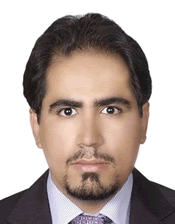Hesam's Biography

Hesameddin Ilatikhameneh got his BSc from KNTU University in 2005 and his MSc from Sharif University, Tehran, Iran in 2007. After graduation he has developed a general purpose Partial Differential Equation solver software. He has previously worked on the simulation of HEMT transistor, PECVD fabrication process and flux flow in HTc superconductors.
From 2011 he is a PhD student at Purdue University in Prof. Klimeck's group. He conducts research on ultra-scaled transistors to predict and optimize the effects of novel materials and geometries for future technology. He is currently a member of NEMO5 (NanoElectronics MOdeling Tool) team and has worked on developing quantum transport, strain, mode-space, and phonon solvers for this Tool. He has been an active member of LEAST project with the purpose of realizing steep subthreshold devices.
Steep subthreshold devices:
- Graphene and TMD material TFETs [1-3]
- Propose dynamic band gap field effect transistor [4-5]
- Nitride hetero structures TFETs [6-9]
Analytic model development:
- Model for ultra-scaled tunnel FETs [10-11]
- Scaling theory of electrically doped 2D tunnel FETs [12]
Ultra scaled MOSFETs:
- Modeling the challenges in ultra-scaled MOSFETs and propose the solution [13-14]
Strain:
- Implement a general algorithm for atomistic relaxation in NEMO5
- Implement strained transport in NEMO5
- Implement strained transport in NEMO5
Phonons:
- Implement a general algorithm for dynamical matrix in NEMO5
- Phonon transport [19]
- Phonon unfolding of random alloys [18]
Mode-space:
- Implement a generic mode space solver for tight binding Hamiltonians and VFF phonons in NEMO5
Patent application:
- Hesameddin Ilatikhameneh, Rajib Rahman, and Gerhard Klimeck, "Dielectric Engineered Tunnel Field-Effect Transistor," US-patent application 62/197,513
- H. ILATIKHAMENEH, T. AMEEN, B. NOVAKOVIC, R. RAHMAN, AND G. KLIMECK, "Tunnel field effect transistor having anisotropic effective mass channel", US-patent application filed on 4/4/2016.
